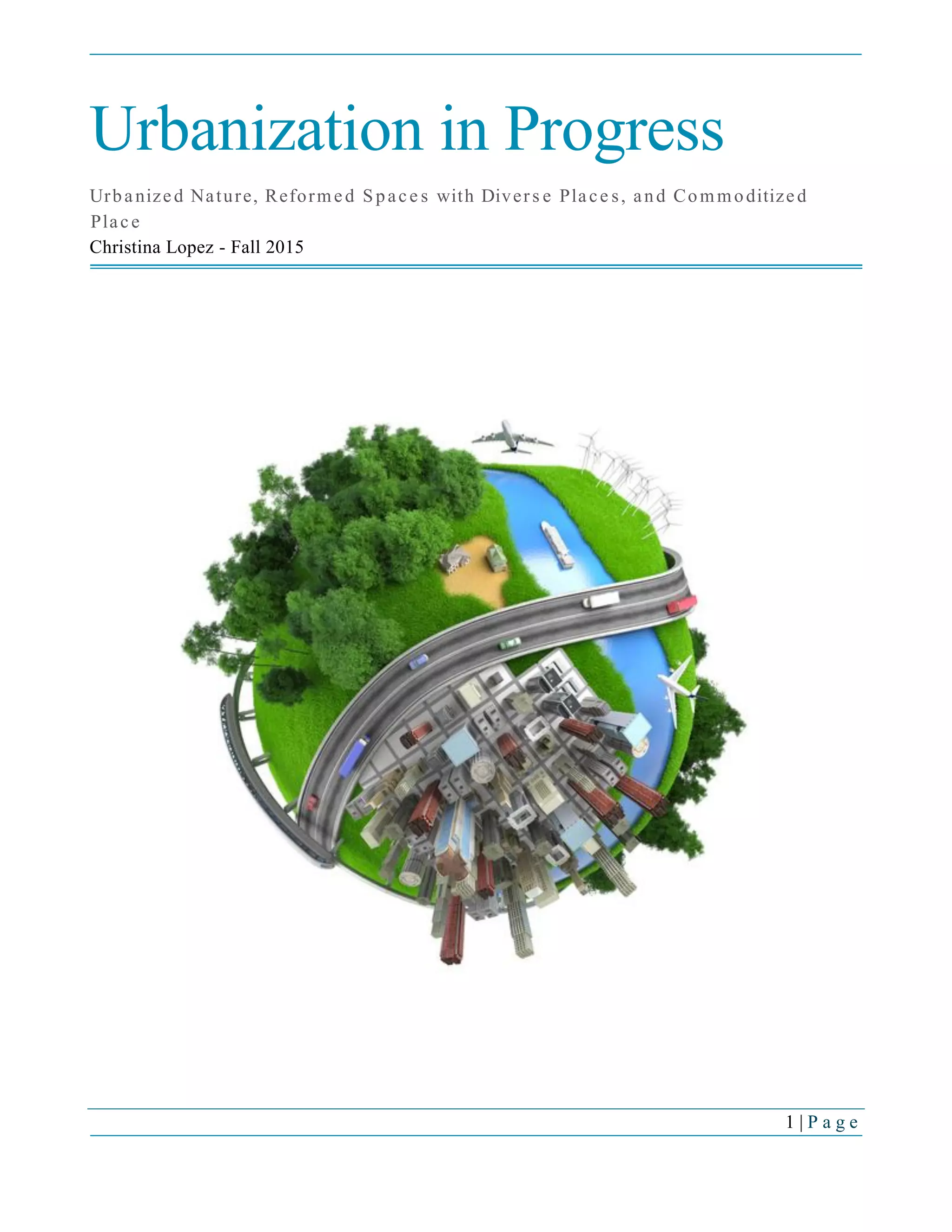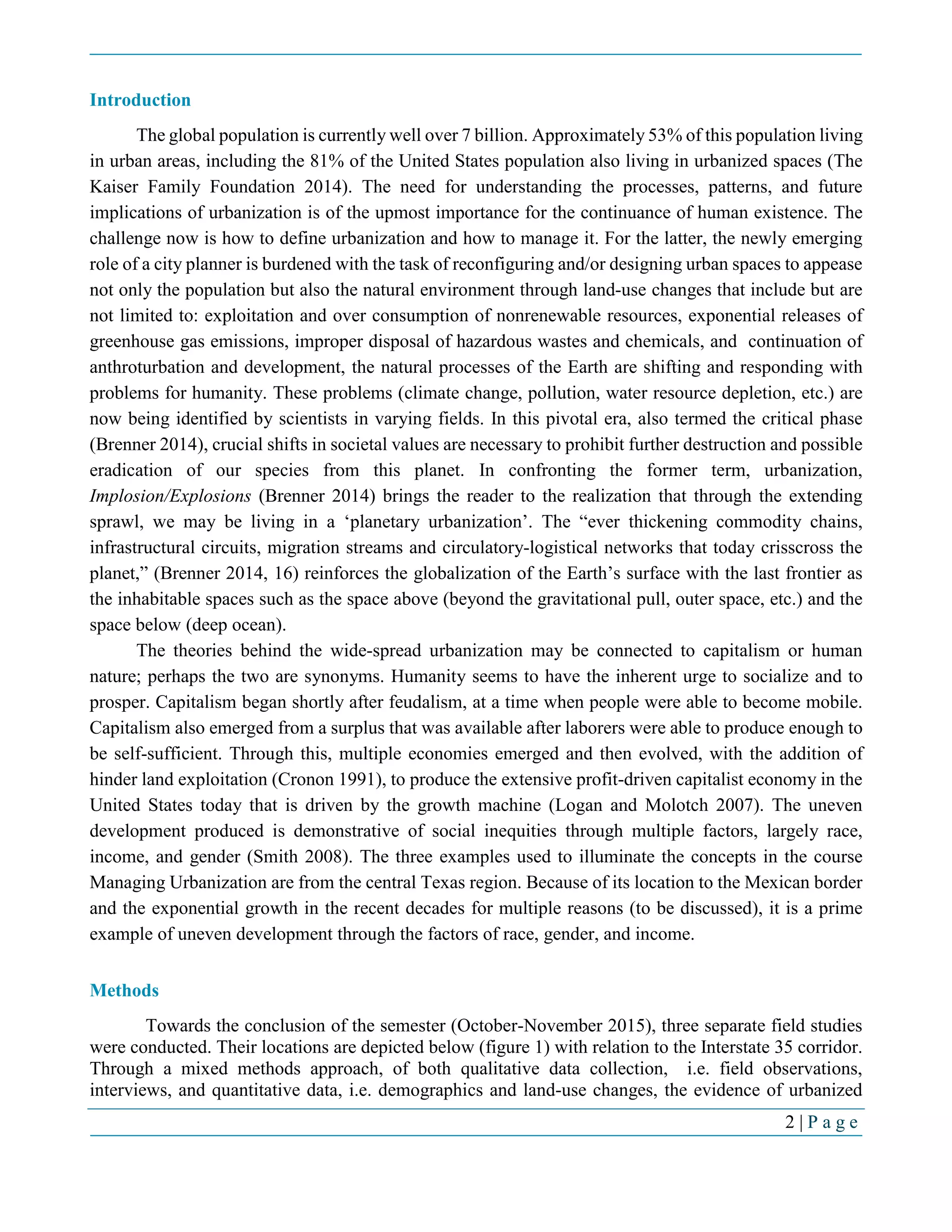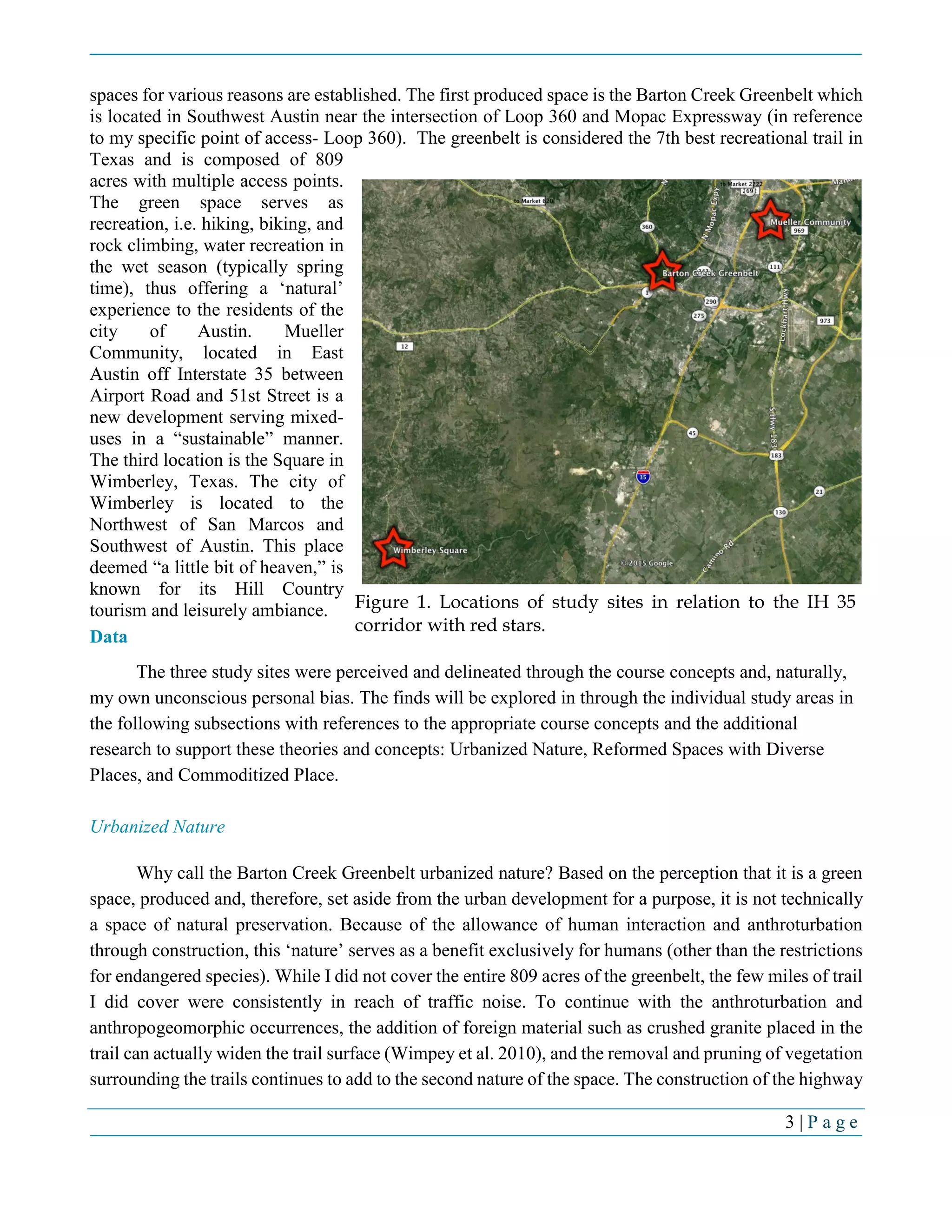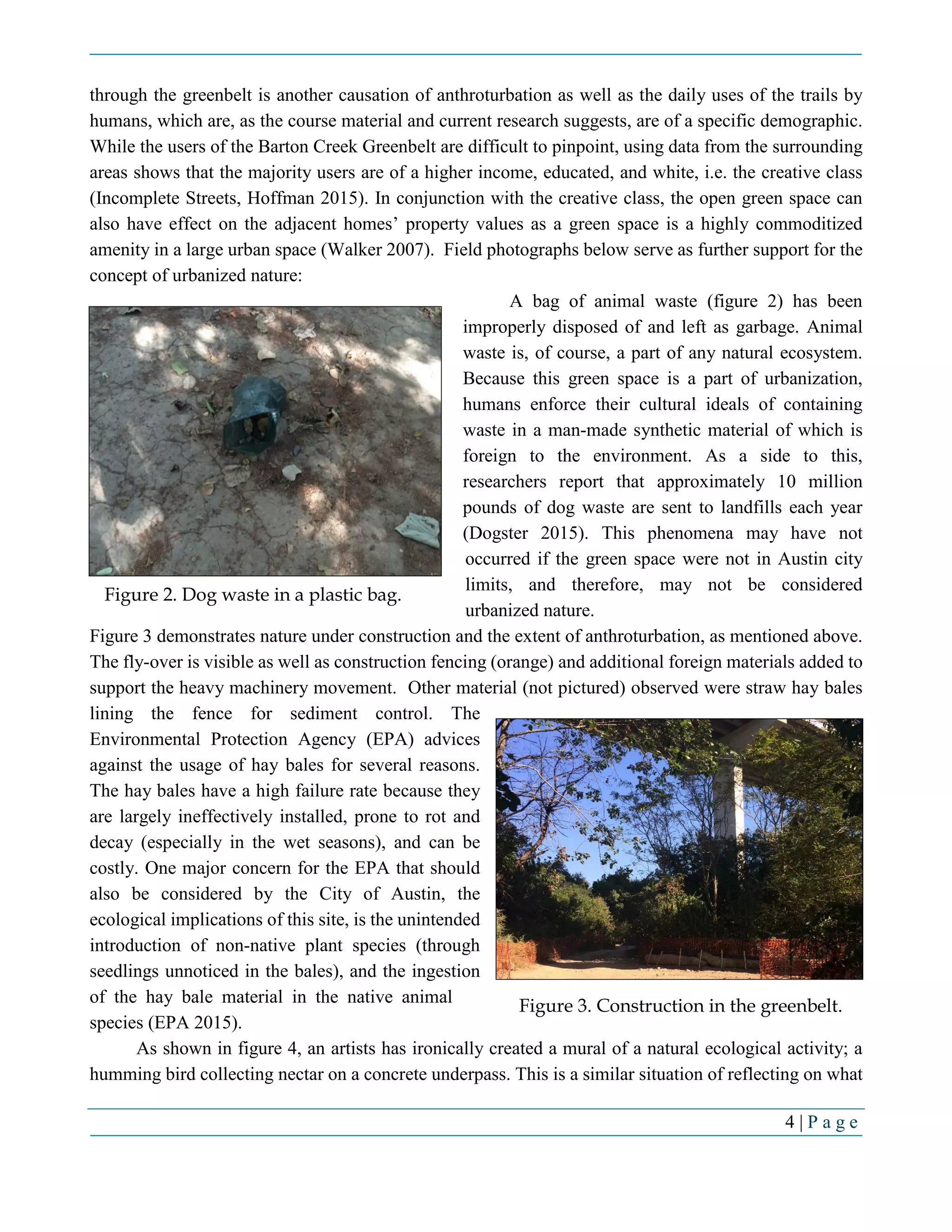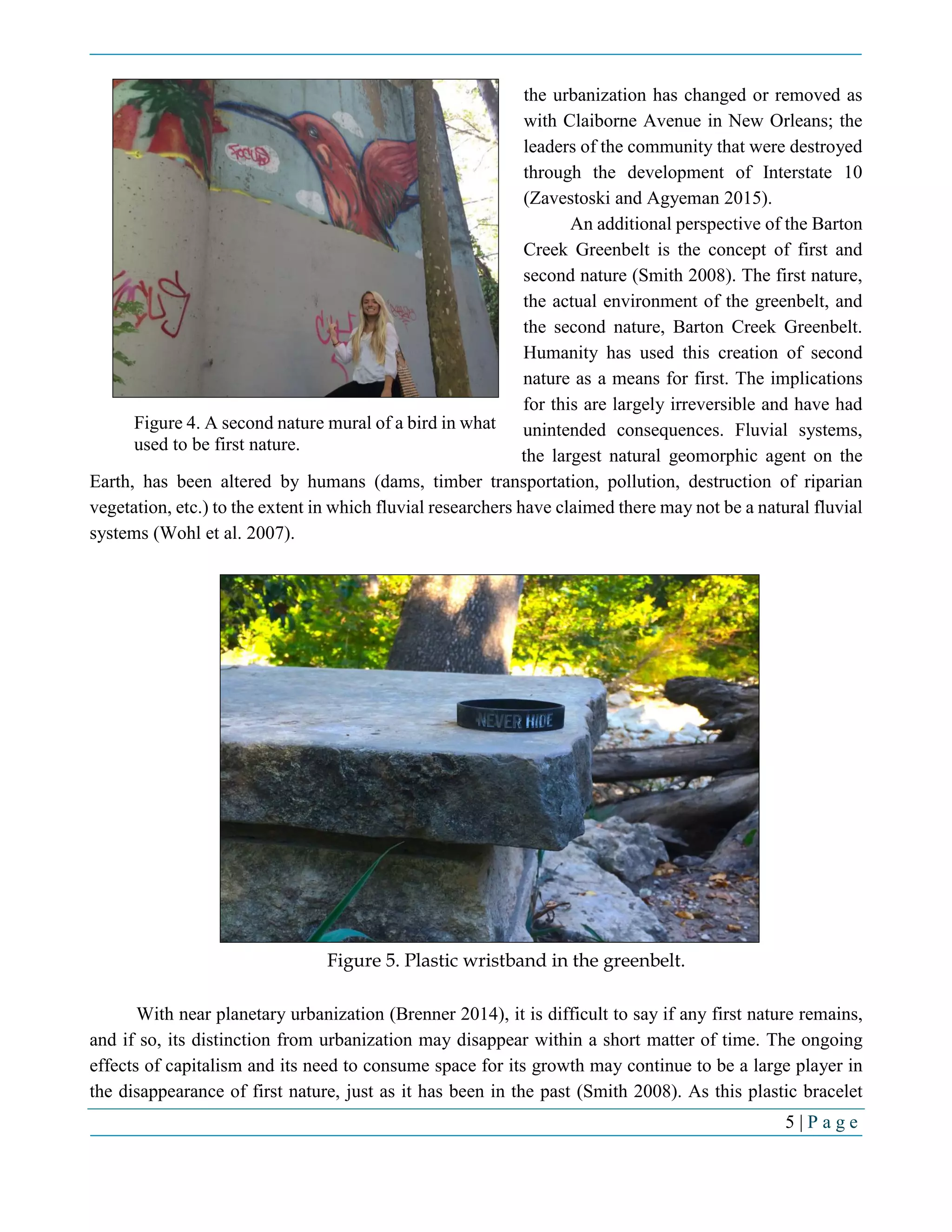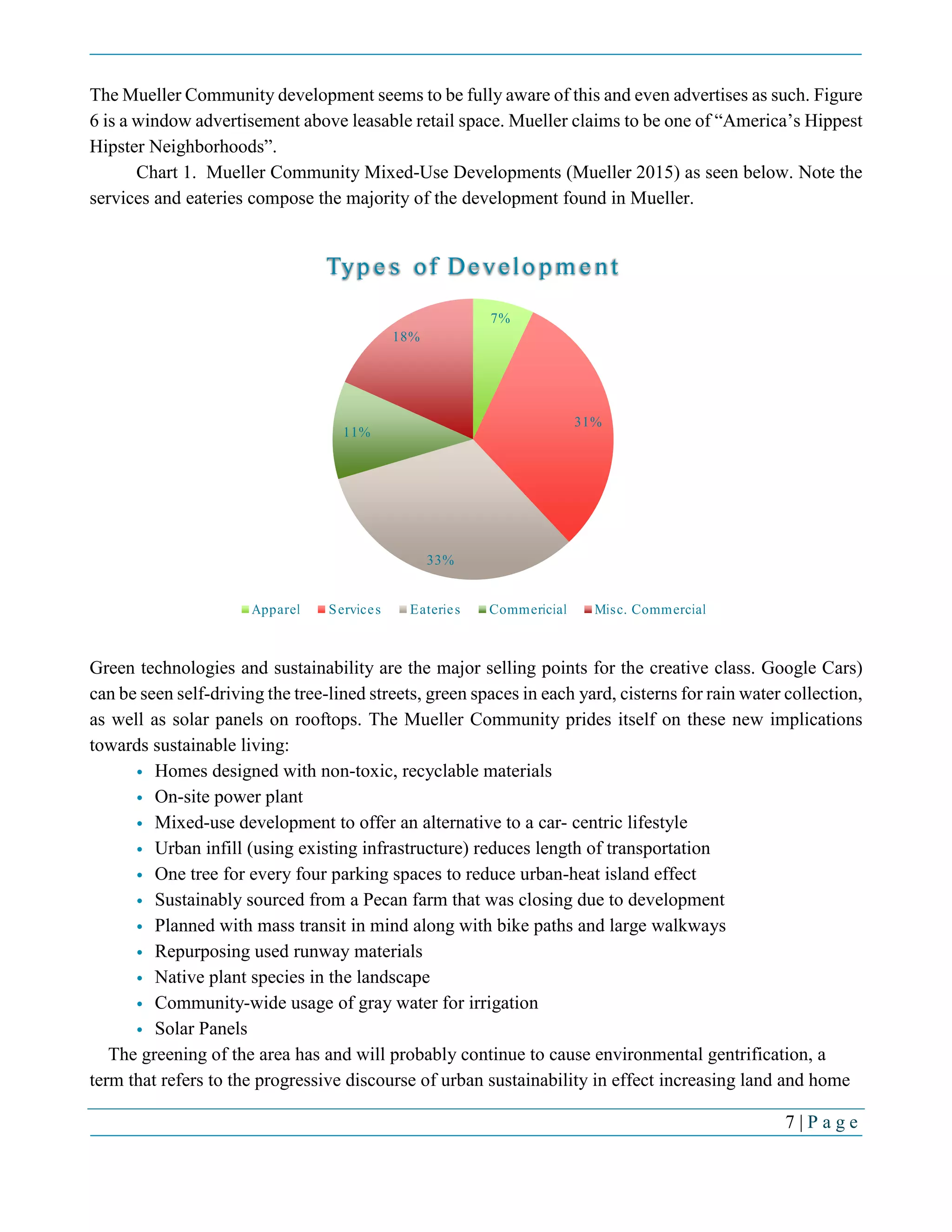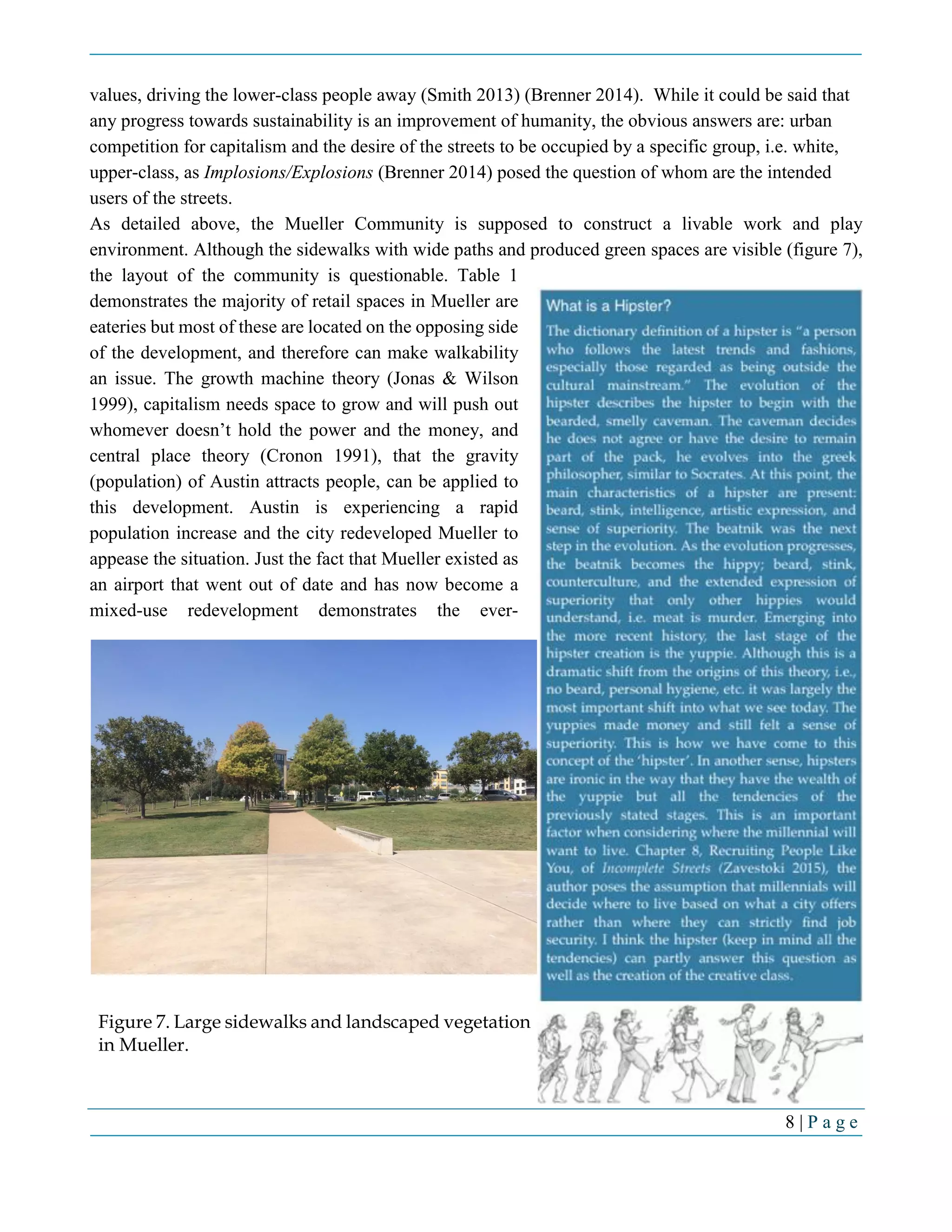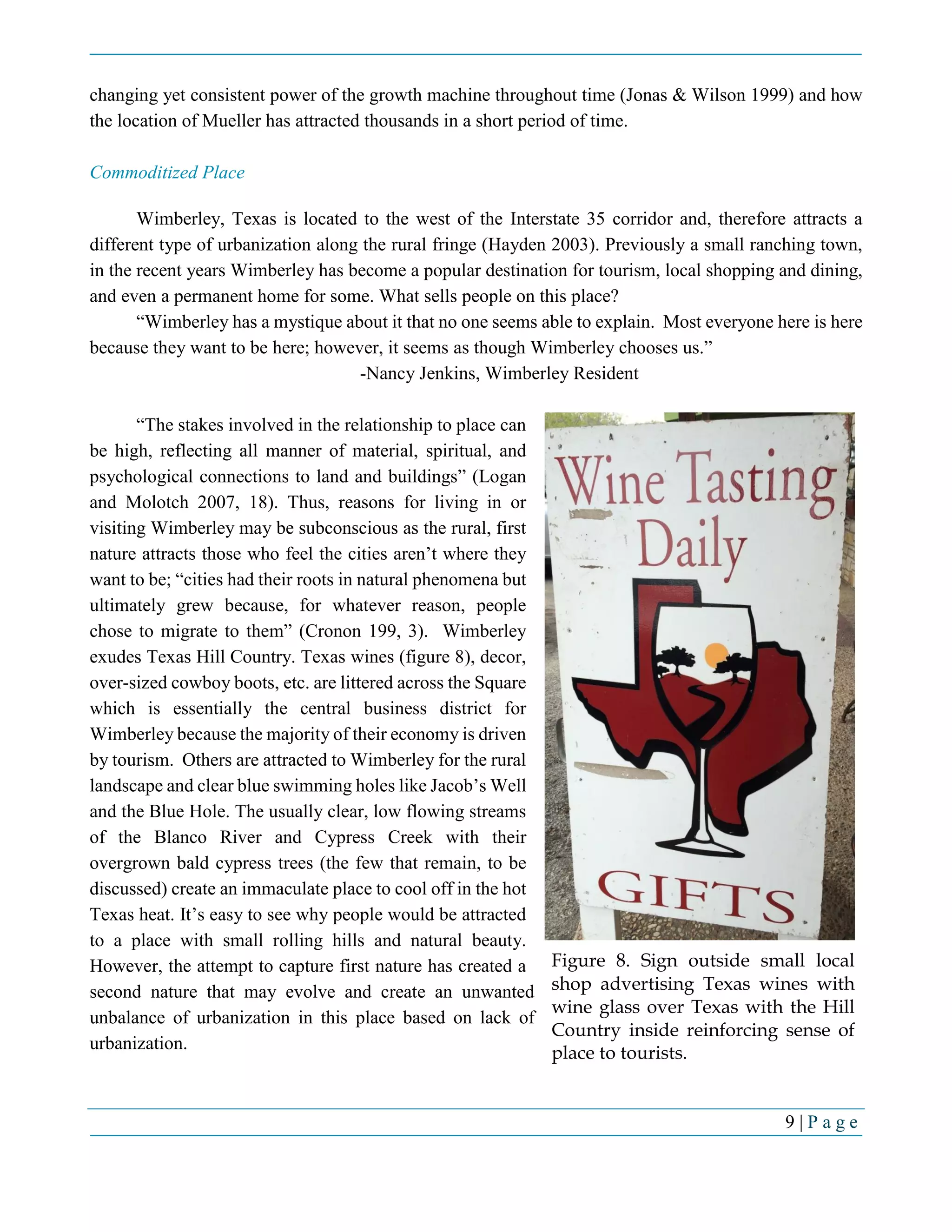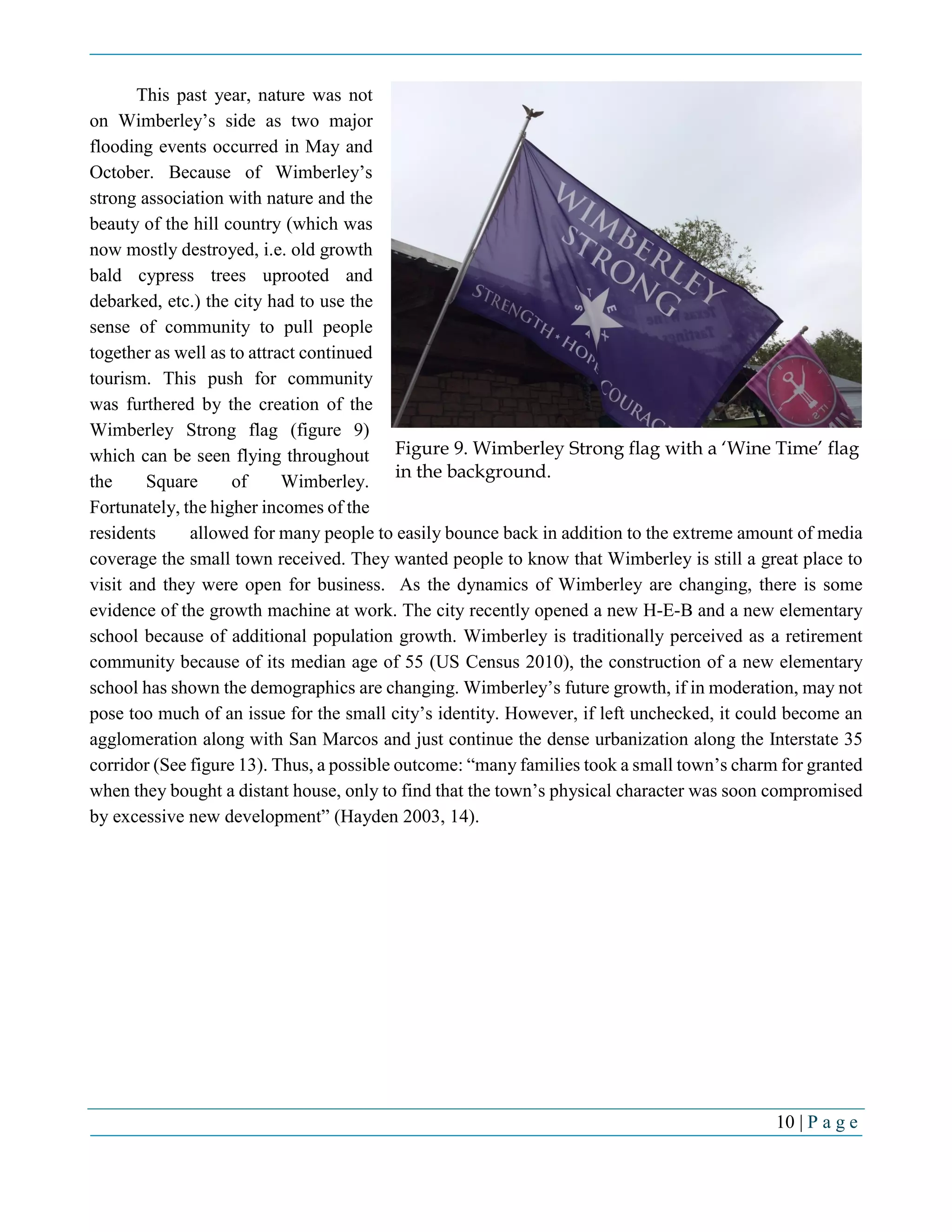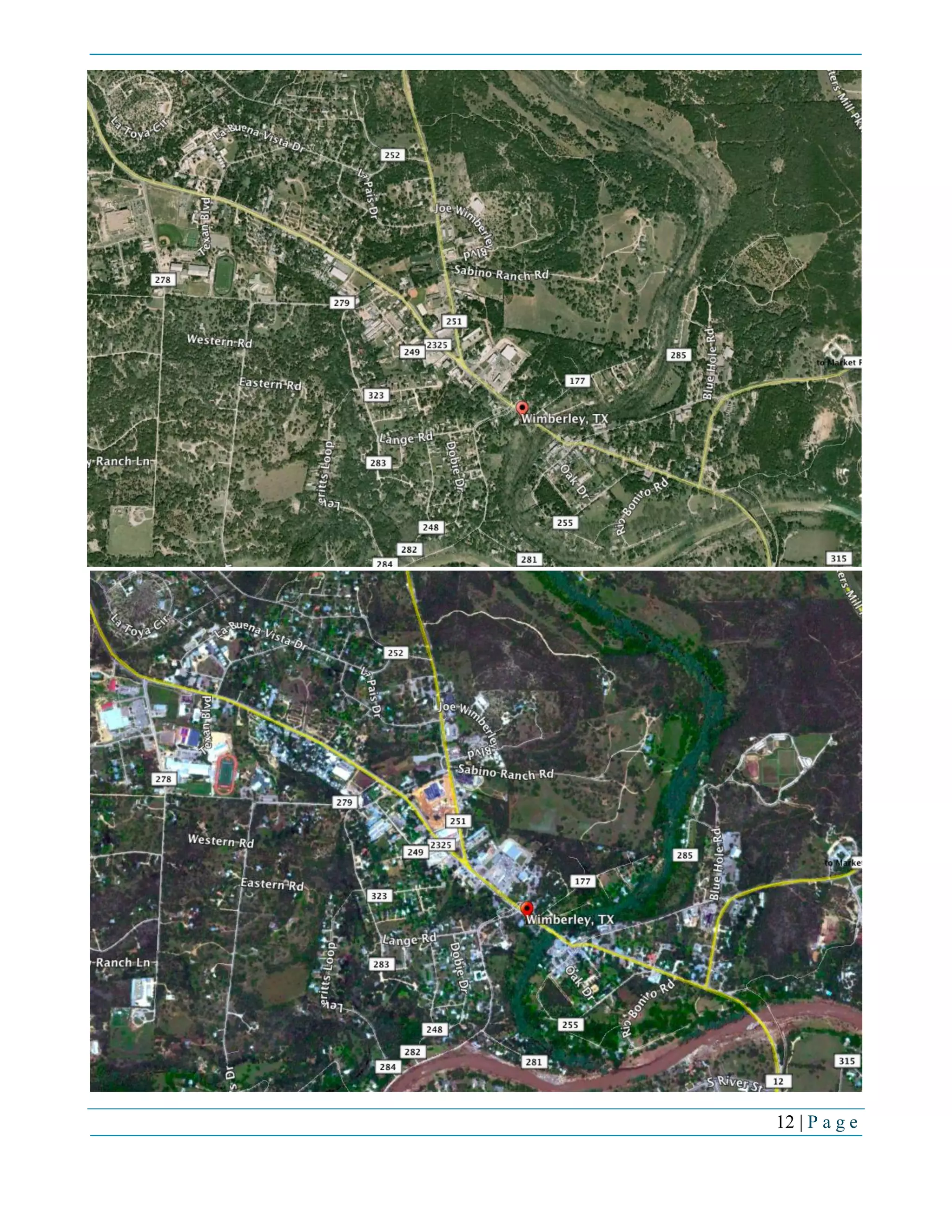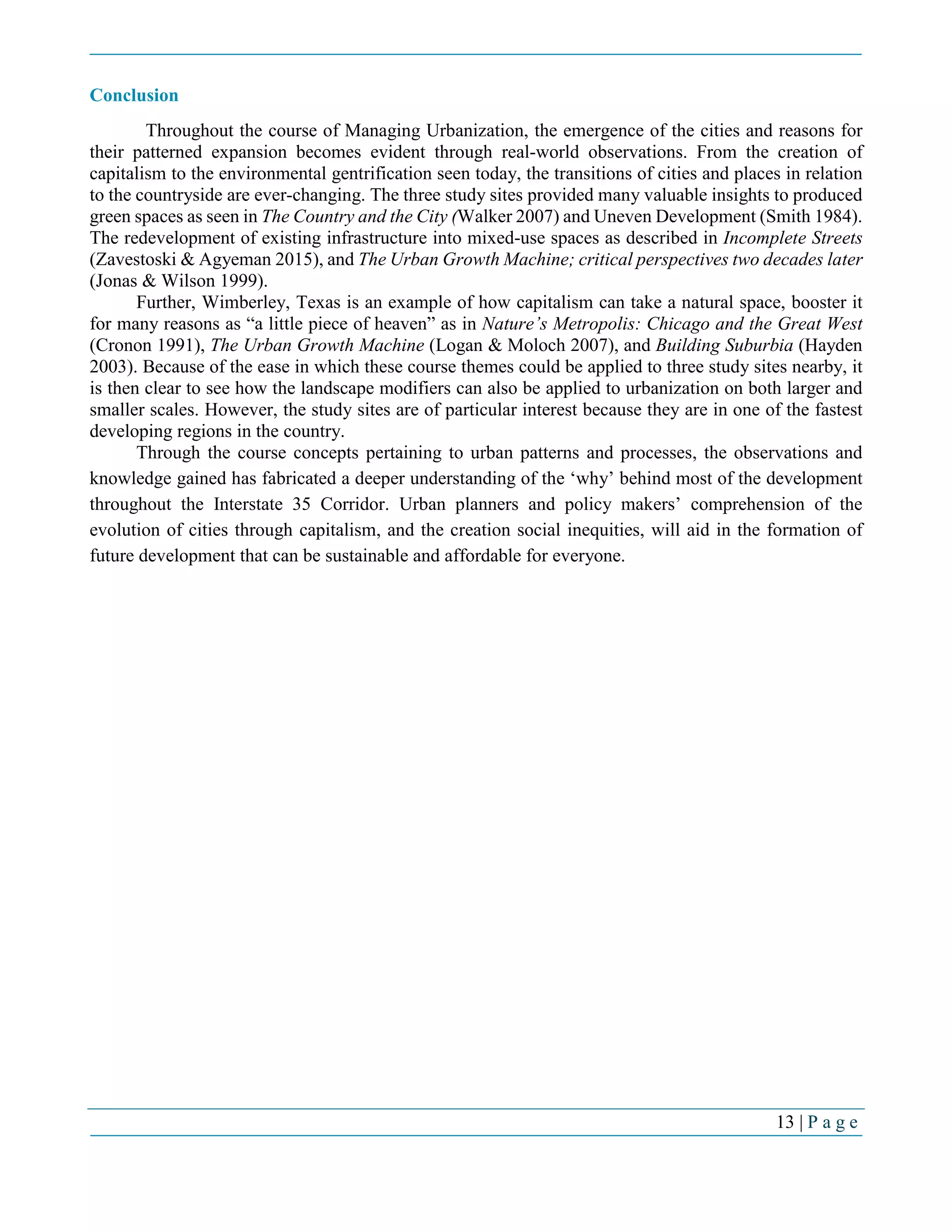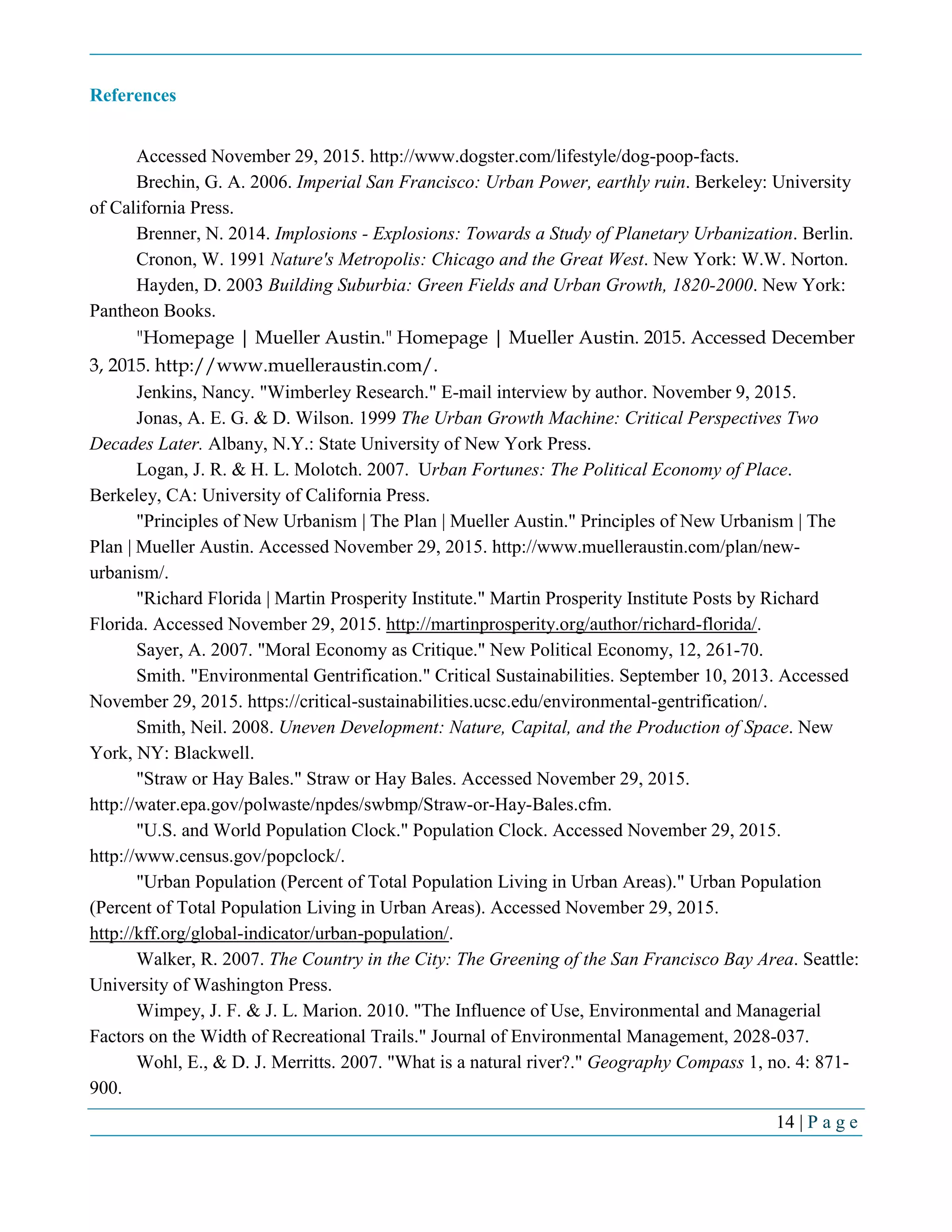This document discusses urbanization and analyzes three case studies located along the Interstate 35 corridor in central Texas. The first case study is the Barton Creek Greenbelt in Austin, which is described as "urbanized nature" despite being a green space. Evidence provided includes observations of human waste, construction activities, and evidence that the greenbelt's users are predominantly white and higher-income. The second case study is the Mueller community in Austin, described as reformed spaces with diverse places. The third is the town square in Wimberley, analyzed as a commoditized place that attracts tourism. The document examines how these case studies relate to concepts of urbanization, capitalism, and their impacts on nature.
